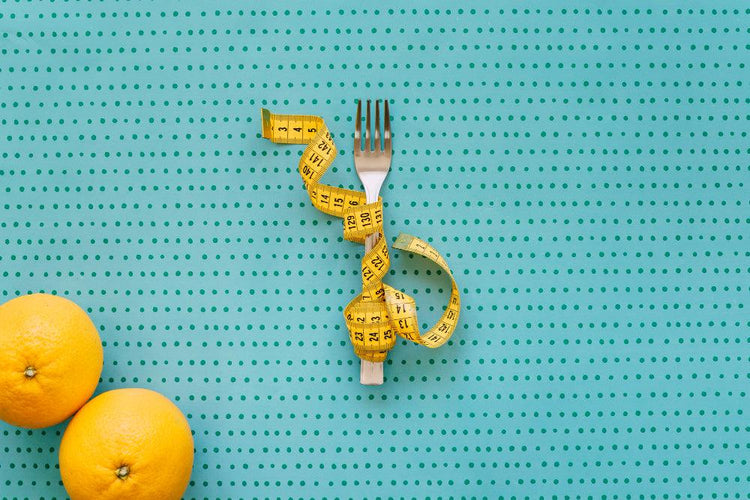
Related products
What are Macros?
The term 'macronutrients' encompasses the triumvirate of nutrients: proteins, carbohydrates, and fats, each playing an indispensable role in the human body's functionality. Macros are the foundational building blocks of every diet, supplying the energy and substrates necessary for bodily functions. Indeed, these are the very nutrients one must consume in large quantities to sustain energy levels, growth, and cellular repair.
The Significance of Counting Macros
Counting macros has emerged as a cornerstone strategy for individuals aiming to sculpt their physique, enhance performance, or simply cultivate a healthier lifestyle. Dr. Alex Thompson, a sports nutritionist, underscores the importance: "By counting macros, you're not only able to manage weight but can fine-tune your diet to improve fitness outcomes and overall health." Macro counting transcends mere calorie counting by emphasising nutrient balance, which is pivotal for metabolic processes and body composition.
The Roles of Proteins, Carbohydrates, and Fats
Each macronutrient assumes a unique role: proteins are the building blocks of muscle, enzymes, and hormones; carbohydrates serve as the primary energy source, particularly for the brain and muscles during exercise; and fats are crucial for energy storage, insulation, and nutrient absorption. The British Nutrition Foundation provides guidelines suggesting that these macros are integral to not just survival but thriving health.
It's vital to recognize that effective weight reduction often requires a holistic plan, combining calorie reduction, active and healthy lifestyle choices, and occasionally, where fitting, the application of medical assistance with products such as Wegovy.
Understanding Macronutrients
The Macro Trio Detailed
Proteins, made up of amino acids, are essential for tissue repair and immune function. Carbohydrates, classified into sugars, starches, and fibres, are the body's most readily available energy source. Fats, dense in energy, are categorised into saturated, unsaturated, and trans fats, each with distinct effects on health.
Functions in the Body
The functions of macronutrients are as diverse as they are vital. Proteins catalyse biochemical reactions and form the scaffolding of cellular structures. Carbohydrates fuel the brain and muscles, maintaining blood glucose levels. Fats contribute to hormonal production and cell membrane integrity. "Understanding the multifaceted roles of macronutrients can illuminate the path to optimal health," says Dr. Richard Davies, a researcher in metabolic science.
Recommended Intake
The recommended daily intake of macronutrients varies, with the government's Eatwell Guide proposing a balanced diet comprising approximately 50% carbohydrates, 35% fats, and 15% protein. These percentages fluctuate based on age, sex, and activity level, highlighting the bespoke nature of dietary requirements.
Setting Your Macro Goals
Caloric Needs
Determining one's caloric needs is a nuanced process, influenced by age, sex, weight, height, and physical activity levels. An individual's caloric requirement is as unique as their fingerprint, necessitating tailored calculations for precision. This personalisation is the bedrock of an effective macro-counting approach.
Total Daily Energy Expenditure (TDEE)
Total Daily Energy Expenditure represents the total number of calories one expends in a day, considering all activities. Calculating TDEE is a fundamental step in setting macro targets, as it provides a benchmark for caloric intake. Dr. Thompson describes TDEE as "the guiding light towards balancing energy input with output, imperative for body composition goals."
Allocating Calories to Macros
Once caloric needs are established, the intricate task of dividing calories into macronutrient ratios commences. This division is influenced by personal health objectives, with variations such as the ketogenic diet leaning heavily on fats, while high-protein diets are preferred for muscle synthesis. "The art of allocating calories to macros lies in aligning them with one's health ambitions," Dr. Davies advises.
Personalising Macro Goals
Tailoring macro ratios to individual aims is a dynamic process, with dietary adjustments reflecting evolving fitness goals or lifestyle changes. Whether pursuing ketosis or muscle hypertrophy, the manipulation of macro ratios is a delicate balancing act.
Ways to Count Macros
Traditional Methods Versus Modern Technology
In the quest to count macros, one can adopt the traditional paper-and-pen approach or embrace modern technology. Dr. Emily Foster, a dietitian specializing in technology-assisted nutrition, notes, "While traditional methods foster a fundamental understanding of macro content, apps and websites offer unparalleled convenience and immediate data analysis." The choice between logging dietary intake in a journal or inputting into a digital tracker often boils down to personal preference and lifestyle.
Keeping a Food Diary
Maintaining a food diary can be a reflective practice, promoting mindfulness about food choices. "A food diary not only tracks intake but also encourages a deeper connection with eating habits," says Dr. Foster. This meticulous recording of meals can be an eye-opener, revealing patterns that may otherwise go unnoticed.
Reading Food Labels
Food labels are treasure troves of information, providing insight into the macro content of packaged foods. "Understanding food labels is crucial for macro counting, as it empowers consumers to make informed dietary decisions," asserts Dr. Thompson. The ability to decipher nutritional information is a skill that serves both the health-conscious and those with specific dietary requirements.
Measuring and Weighing Food
Accuracy in macro counting is often underpinned by the precise measuring and weighing of food portions. Measuring food can eliminate guesswork, ensuring that macro targets are met with precision. This process can become second nature over time, contributing significantly to the success of a macro-based diet.
Tips for Accurate Macro Counting
Consistency in Measuring
The cornerstone of accurate macro counting is consistency in measurement practices. "Consistent measuring tools and techniques are essential to ensure that daily macro intake remains on target," Dr. Foster advises. Regular calibration of kitchen scales and familiarisation with portion sizes can enhance the reliability of dietary tracking.
Eating Out and Estimating Portions
Dining out poses a challenge for macro counters due to the uncertainty of portion sizes and ingredients. However, Dr. Thompson suggests that "developing the ability to estimate portion sizes can mitigate the unknowns of eating out." He recommends that diners engage with restaurant staff to gain insights into meal composition, making educated estimates based on visual cues and experience.
Adjusting for Cooking Methods and Ingredient Changes
Cooking methods can alter the macro content of food, as can substituting ingredients. "Being aware of how cooking methods impact macro values is vital for accuracy," says Dr. Davies. He also notes that swapping ingredients requires recalculating macro ratios, advocating for the use of tracking apps that allow for such adjustments.
Implementing Macro Counting in Daily Life
Planning Meals Around Macro Goals
The strategic planning of meals around macro goals is a practice advocated by nutrition professionals. Dr. Foster advises, "Meal planning should be centred around macro targets to streamline the process and ensure nutritional balance." This approach can simplify grocery shopping and reduce the daily decision-making burden.
Meal Prepping Ahead of Time
Meal prepping is a time-efficient strategy that aligns with macro counting. Preparing meals in advance ensures that macro proportions are controlled and readily available. This habit not only saves time but also prevents deviations from macro goals during busy periods.
Balancing Macro Counting with a Busy Lifestyle
Incorporating macro counting into a hectic lifestyle requires adaptability. Dr. Thompson stresses, "Finding a method that fits within one's routine is crucial for sustainable macro tracking." This might mean utilising quick and efficient tracking apps or preparing macro-friendly snacks for on-the-go consumption.
Being Flexible and Making Adjustments
Flexibility in macro counting is fundamental to maintaining both sanity and progress. "Rigid adherence can lead to burnout; hence, flexibility and the willingness to adjust are key," Dr. Davies explains. This flexibility might involve altering macro ratios in response to lifestyle changes or allowing for occasional indulgences without guilt.
Common Challenges and Solutions
Overcoming the Learning Curve
The initial phase of macro counting can be daunting, laden with the intricacies of nutritional science. Dr. Foster counsels, "Embrace the learning curve as an educational journey—one where each day builds your nutritional acumen." Starting with basic macro tracking and progressively delving deeper into the nuances can mitigate overwhelm. Additionally, many find that enlisting the help of a nutritionist or utilising interactive online resources can flatten the learning curve significantly.
Dealing with Cravings and Social Events
Cravings and social gatherings are oft-cited hurdles in macro counting. "Cravings can be managed by ensuring macro targets include a variety of foods, thus warding off monotony," Dr. Smith recommends. As for social events, Dr. Thompson advises, "Planning ahead by saving macro allowances for events or choosing lighter meals earlier in the day can help maintain balance." The key is to find harmony between social enjoyment and dietary goals.
Strategies for Staying on Track During Holidays and Vacations
Holidays and vacations pose their unique set of challenges to macro counting due to the temptation of indulgent foods and disrupted routines. Dr. Davies suggests, "Approach holidays with a strategy—prioritise key macro targets and allow some flexibility for festive foods." Mindful indulgence, coupled with staying active, can help maintain progress without forgoing the joy of special occasions.
Macro Counting for Special Diets
Vegetarian and Vegan Considerations for Protein Intake
For vegetarians and vegans, meeting protein macros requires a considered approach. "Plant-based diets can provide ample protein through a well-planned variety of sources like legumes, grains, and soy products," says Dr. Foster. Incorporating a spectrum of plant proteins ensures a complete amino acid profile, crucial for those eschewing animal products.
Low-Carb and Ketogenic Approaches to Macro Counting
Adopting low-carb or ketogenic diets shifts the macro focus significantly towards fats and proteins. "The key to low-carb diets is ensuring that the reduction in carbohydrates is balanced by an increase in quality fats and proteins," Dr. Smith explains. This balance supports ketosis, the metabolic state that low-carb diets aim for, and can be closely monitored through macro counting.
Adapting Macro Counting for Food Intolerances and Allergies
For individuals with food intolerances and allergies, macro counting requires an additional layer of vigilance. "It's about finding alternative sources that fulfil macro requirements without triggering adverse reactions," Dr. Thompson states. This often means substituting common allergens with comparable nutrient-dense foods, a task where nutrition labels and food diaries become invaluable.
Conclusion
To recapitulate, counting macros is a multifaceted tool that facilitates mindful eating, precise nutritional intake, and the attainment of specific health and fitness goals. It is an approach that fosters a deeper understanding of the relationship between diet and well-being.
The journey of macro counting is punctuated by learning and adaptation. "Patience and persistence are the pillars upon which dietary transformations are built," Dr. Davies reminds us. The process is iterative, often requiring adjustments and a dose of resilience.
As we conclude, consider these final tips: be flexible, use technology to your advantage, and remember that every macro counted is a step towards your goal. Dr. Foster encourages, "Continue to educate oneself, for knowledge is the precursor to success." There are numerous resources available for those who wish to delve deeper, from nutritional databases and scientific publications to online forums and mobile applications. With these tools at your disposal, the path to mastering macro counting is well within reach.










 Rated Excellent by 26,523+ Reviews
Rated Excellent by 26,523+ Reviews